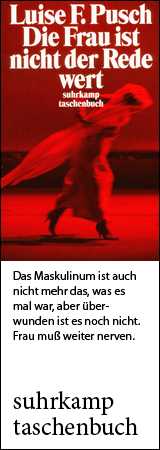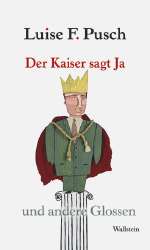
(Annelise Else Frieda Fleischmann [birth name])
born on June 12, 1899 in Berlin-Charlottenburg, Germany
died on May 9, 1994 in Orange, Connecticut, United States
German-American textile artist, weaver and printmaker
30th anniversary of her death on May 9, 2024
125th birthday on June 12, 2024
Biography
Anni Albers returned to Europe in 1989, when she was 90 years old, for the exhibition of her own art alongside that of her husband. The major works of the two artists, Anni Fleischmann and Josef Albers, were presented in the Villa Stuck in Munich as a kind of artistic dialogue in a retrospective exhibition that looked back at their long life together from its beginnings in 1922 when the couple met at the Bauhaus in Weimar.
Anni Albers had actually initially wanted to study painting, but then decided in favor of the applied arts; her studies in the weaving workshop began in 1923. The aim of the training at the Bauhaus was to “abolish the divisive distinction between the free and the applied arts and to allow a fruitful interplay of the two” (Gropius). Albers felt that the restrictions imposed by the craft offered her a kind of supporting framework that guided her, in contrast to the freedom of painting.
She distinguished herself in the two contrasting areas of weaving: the production of unique artistic pieces and the design of various fabrics for industrial production. In 1931, Anni Albers took over the management of the weaving workshop as Gunta Stölzl's successor.
Although Bauhaus founder and director Walter Gropius had declared there was “absolute equality” and “no special treatment of the ladies,” women were actually only given a chance in the traditionally feminine field of weaving. Gunta Stölzl and, after her, Anni Albers, were the only women masters among ten men.
The Bauhaus was closed when Hitler came to power in 1933. The couple emigrated to the United States, where Anni Albers began a 16-year teaching career at Black Mountain College in North Carolina. Her husband became a well-known color theorist and a leading spokesman for abstract art.
They moved to New York in 1949. In the same year, Anni Albers became the first female textile artist to exhibit at the Museum of Modern Art and subsequently received many awards and honorary doctorates. Albers started experimenting with abstract printmaking in the early 1960s, as she considered the applied art of weaving to be outdated. She was the last surviving Bauhaus lecturer.
(Text from 1998; translated with DeepL.com; edited by Ramona Fararo, 2024.)
Please consult the German version for additional information (pictures, sources, videos, bibliography).
Author: Renate Rochner
Quotes
And I find that a craft gives somebody who is trying to find his way a kind of discipline. And this discipline was driven in earlier periods through the technique that was necessary for a painter to learn. In the Renaissance they had to grind their paints, they had to prepare their canvas or wood panels. And they were very limited really in the handling of the material. While today you buy the paint in any paint store and squeeze it and the panels come readymade and there is nothing that teaches you the care that materials demand. (Anni Albers in an Interview, 1968. Archives of American Art, Smithsonian Institution)
I admire Klee very much. But what I learned from him I learned from looking at his pictures. Because as a teacher he was not very effective. I sat in a class which he gave to the weaving students and I think I only attended perhaps three of the classes. Klee was so concerned with his own work. He would walk into the room, go up to the blackboard, turn his back to the class, and start to explain something that he probably thought was of concern to those listening to him. But he probably didn't know at all where each of us there was in his own development, in his own concern, in his own searching. I'm sure there were some students who had more direct contact with him. But I didn't have it at all. On the other hand, I find that he probably had more influence on my work and my thinking by just looking at what he did with a line or a dot or a brush stroke and I tried in a way to find my way in my own material and my own craft discipline. (Anni Albers in an Interview, 1968. Archives of American Art, Smithsonian Institution)
[…] the Bauhaus today is thought of always as a school, a very adventurous and interesting one, to which you went and were taught something; that it was a readymade spirit. But when I got there in 1922, that wasn't true at all. It was in a great muddle and there was a great searching going on from all sides. And people like Klee and Kandinsky weren't recognized as the great masters. They were starting to find their way. And this kind of general searching was very exciting. And in my little articles this is what I called the creative vacuum. But the word “education” was never mentioned. And the people we think of as the great masters—Klee and Kandinsky—they weren't available for questions. They were the great silent ones who talked among themselves maybe, but never to small little students like me. But we knew that what the Academy was doing was wrong and it was exciting that you knew you had the freedom to try out something. And that was fine. But, as I say, it wasn't that you went there and were taking something home from there. You were a contributor. (Anni Albers in an Interview, 1968. Archives of American Art, Smithsonian Institution)
If you hold the rights to one or more of the images on this page and object to its/their appearance here, please contact Fembio.



